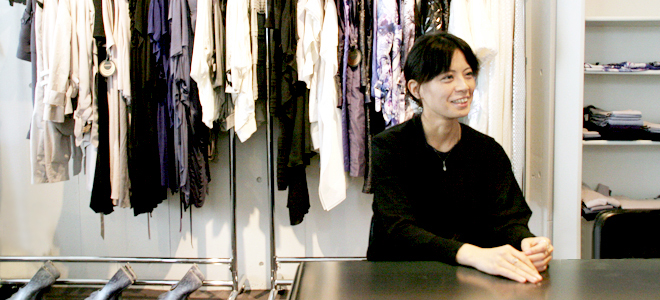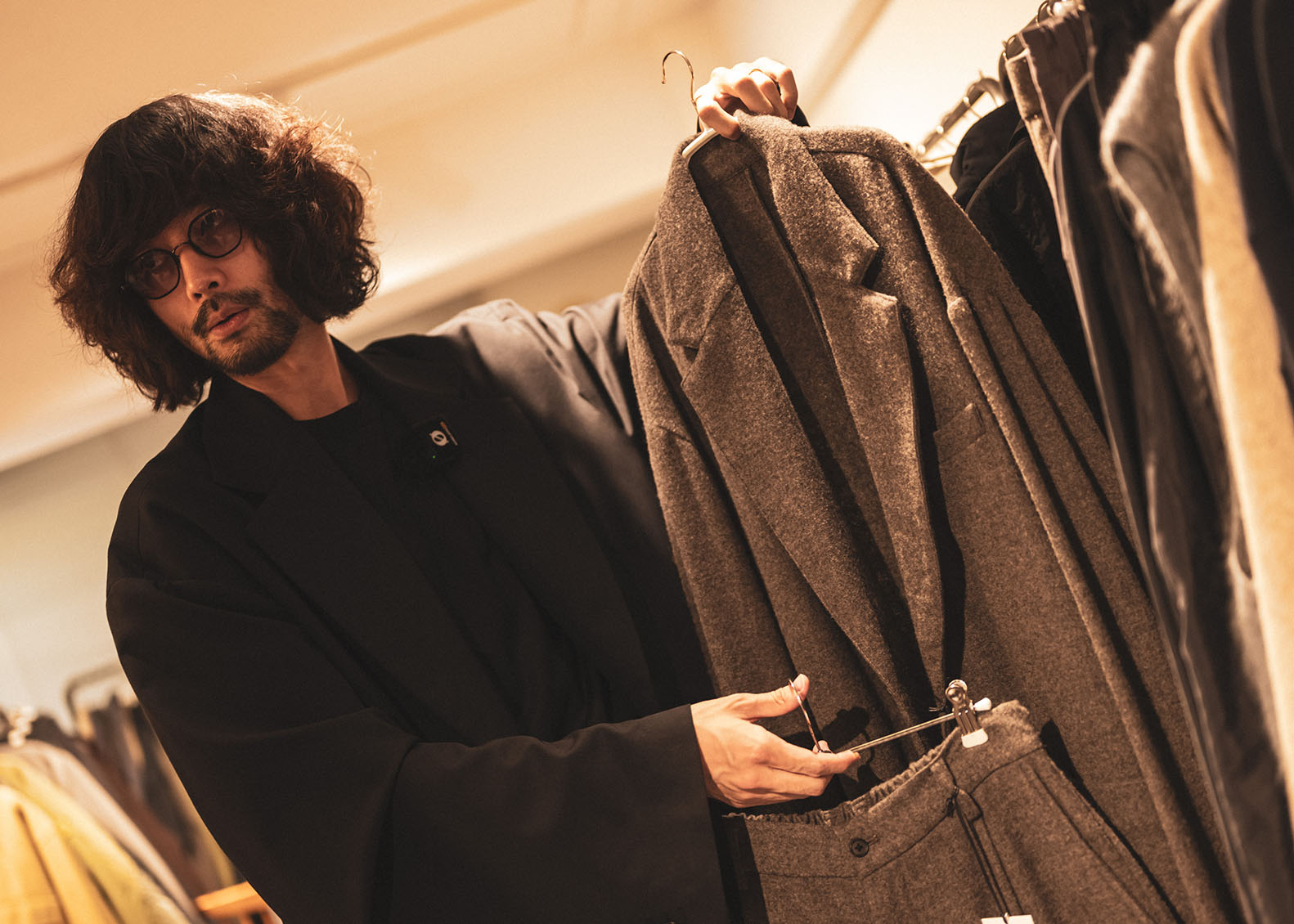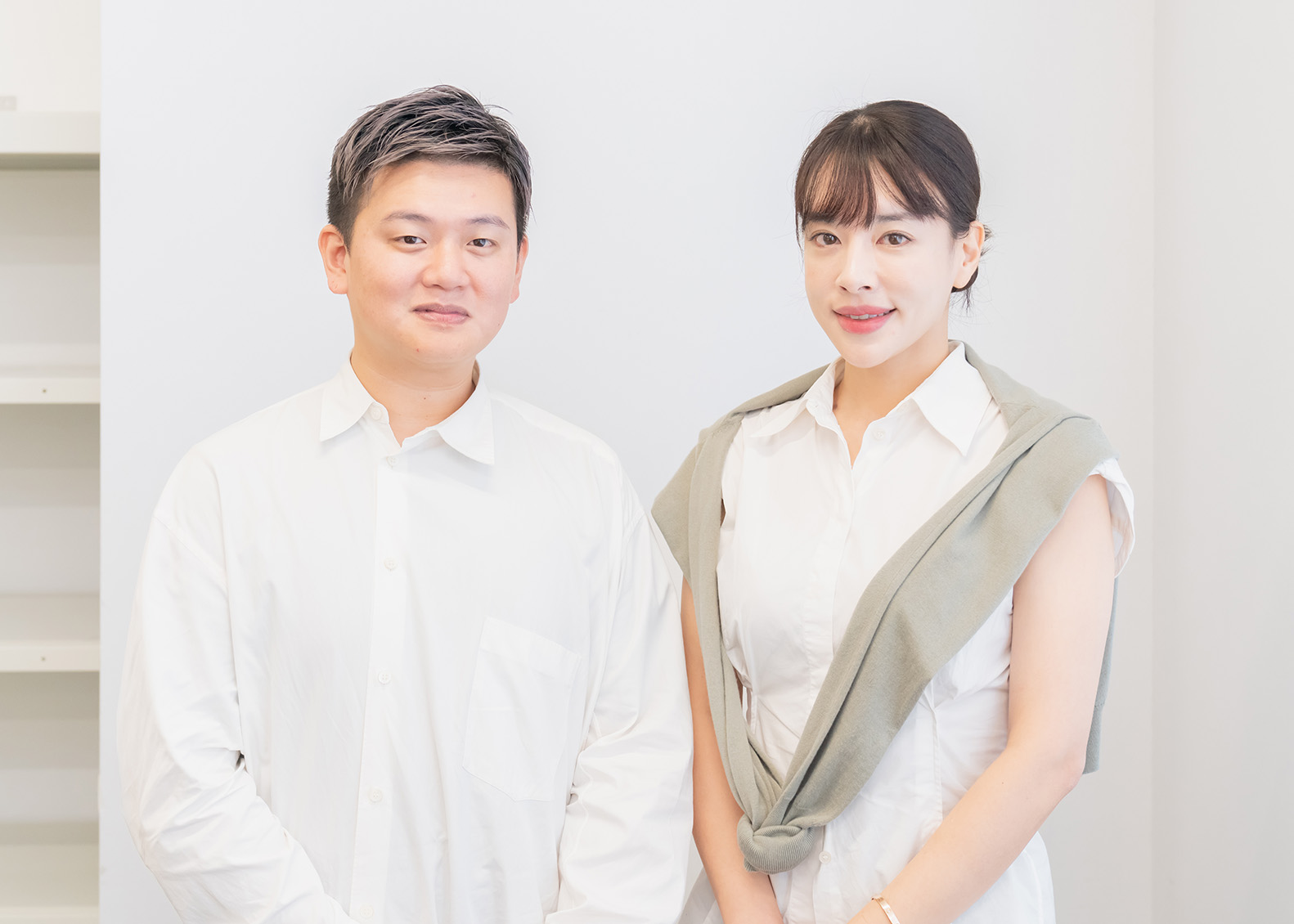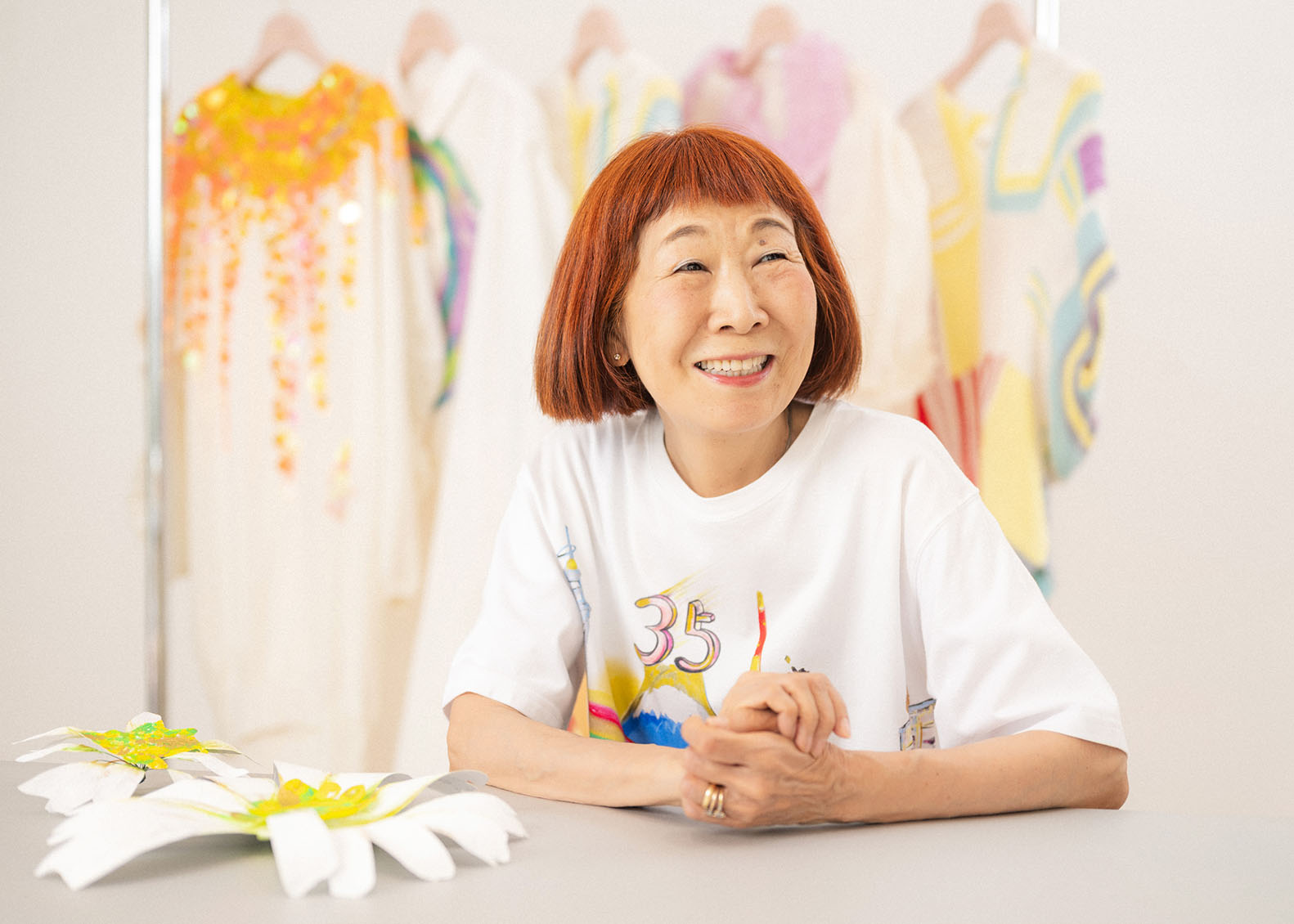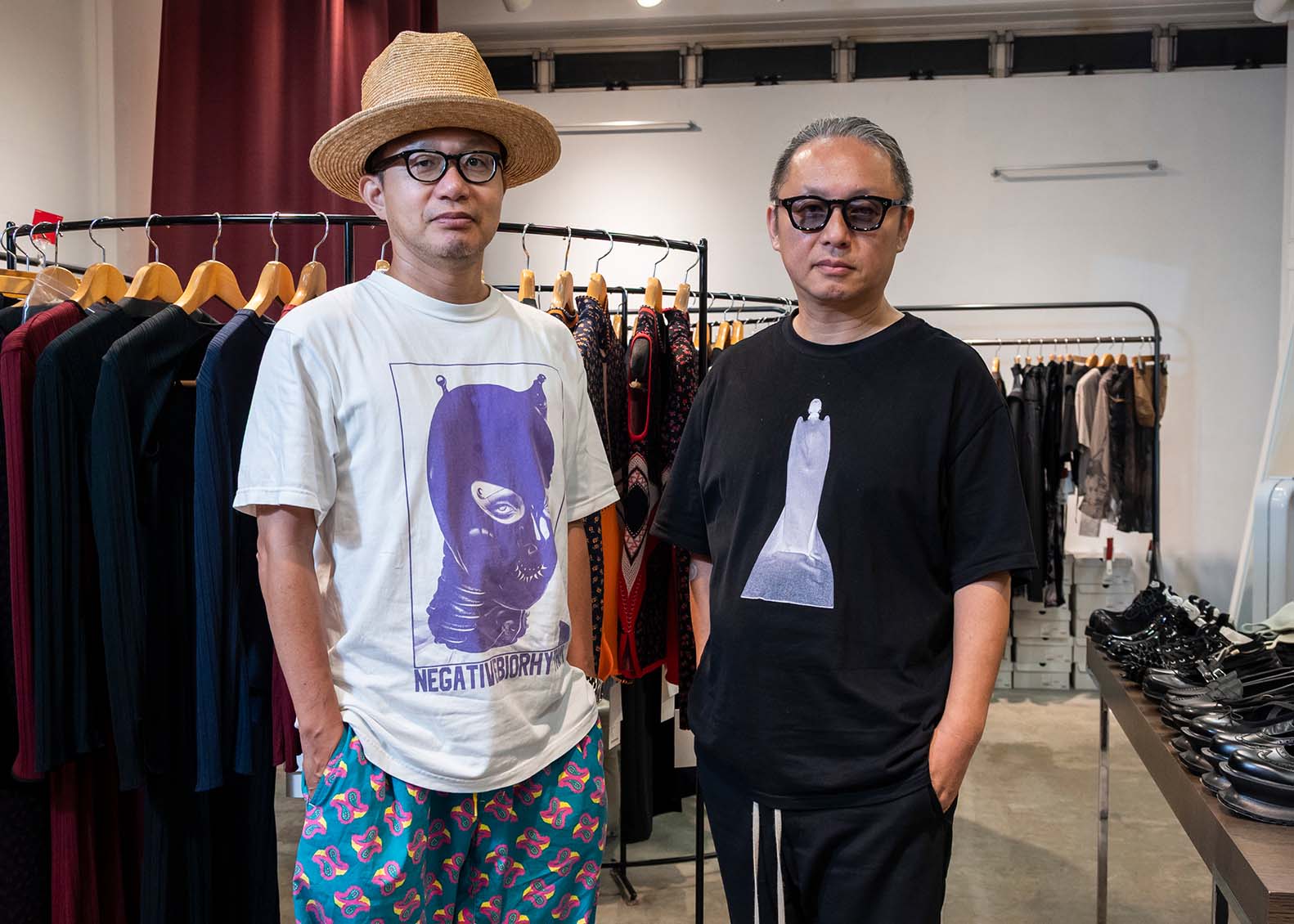TAMAE HIROKAWA
SOMARTA focuses on the beauty of the female body, and is a brand that pursues feminine beauty and further enhances one’s beauty through clothing. The clothes, which are body-conscious while also giving an air of artistic beauty rather than sexiness, attract women. Ms. Hirokawa, whose ideal female image is “feminine and strong, yet also kind; in between a girl and a woman” talked to us about her latest collection and her passion towards fashion.

The theme of your 2011 Spring / Summer collection, “MICROCOSMOGRAPHIA” is quite unique. How did you end up choosing this as your theme?
Hirokawa:The theme of my previous season was “Chamber of Curiosity,” but this was based on the “MICROCOSMOGRAPHIA Mark Dion’s ‘Chamber of Curiosities’” exhibit, which was an exhibit conducted jointly by the American modern artist Mark Dion and Tokyo University. Afterwards, I read the book “MICROCOSMOGRAPHIA Mark Dion’s ‘Chamber of Curiosities’” by Yoshiaki Nishino of Tokyo University, who supervised the exhibit, and decided to borrow the term MICROCOSMOGRAPHIA and use it as my theme.
Both extract a certain part, like a “portion of a room” and feature this portion. Last season’s collection portrayed the pure sensations of thrill and excitement, such as organisms and minerals that could actually be seen by people. However, this time, I imagined a micro-world such as a microcosm, in which your field of vision could be broadened by changing your viewpoint. If you look closely, you can see a lot of details in the textiles, such as shiny prints with 3D textures. I wanted to convey new emotions that arise from the curiosity of looking at something, rather than the passive emotion of being able to see.
SOMARTA originally introduced the “skin series” that featured non-sewn knitwear, and it has the image of focusing on details such as skin and cells.
Hirokawa:I think that my taste hasn’t changed(laughs). I always loved anthropology and biology, and this has influenced my designs.



Your 2011 Spring / Summer show was also a spectacular show befitting the finale. How was the public reaction after the show?
Hirokawa:Many people said that they were “touched,” which made me happy. In particular, the skin series with full embroidery and blue beads in the second half of the show and the two light-feathery pieces towards the end of the show were popular.
What made you want to become a designer?
Hirokawa:I always liked art, and had vague dreams of wanting a job making things in the future. When it was time to decide on a future career path in high school, I debated whether to go to an art school since I wanted to become a specialist, but I decided to become a fashion designer and chose to attend a professional training college.
I was in the art club. I’d always loved people since I was small, and drew lots of picture of people. I also often looked at fashion magazines and was attracted to the image of beautiful women, and dreamed about being able to have a job where I could depict such beautiful female images.

After graduating from school, you joined Issey Miyake, and then established SOMA DESIGN. What do you think looking back?
Hirokawa:I worked at Issey Miyake for about eight years. I worked in both the ladies’ and men’s collections, and was in charge of knitwear. The company was very broad-minded about creations, so I was able to learn a lot. I started off managing the men’s collection and then moved on to the ladies’ collection, but I got to know the entire cycle of the(apparel)work, and decided to take the next step and set up my own business. I was thirty at the time, and since I’d worked at a company during my 20s, I decided that I wanted to spend my 30s doing something that I liked.
When I launched SOMA DESIGN, it was just me, but now we have members specializing in music and graphic arts. I wanted to work in designs in the broad sense that wasn’t just limited to fashion, so SOMA DESIGN is really a design company rather than an apparel company. I was always interested in art, architecture, and product design, so I feel that it would be interesting to work in fields other than fashion while also taking advantage of my fashion skills.
In fact, SOMA DESIGN has produced everything from the brand image to graphics, music, and video images of the SOMATA collection.
The men’s and ladies’ brand “MOLFIC”(designer: Takashi Mori)which held its first show in 2011 Spring / Summer is also affiliated with SOMA DESIGN, but I felt that it was a brand with a different directionality from SOMARTA. Are there plans for men’s clothing for SOMARTA?
Hirokawa:The designer Takashi Mori is also affiliated with SOMA DESIGN, but SOMARTA and MOLFIC have completely different qualities. MOLFIC’s approach to clothing is similar to product design and is a brand that uses different methods and is focused on different areas from SOMARTA, using industrial machines for production, etc.
As for whether we will develop men’s clothing for SOMARTA… in fact, we have many requests for men’s clothing and we have a lot of your male fans, so we would like to develop men’s clothing eventually. However, I feel that we have to develop clothes with a different perspective(from the women’s line).
What do you think about the current environment surrounding Tokyo fashion and the consciousness of consumers?
Hirokawa:I often research stores and observe people walking in the city.
Knocking down the price is something that is done in all industries, but it accelerates the fashion cycle and I feel like the clothes are just swept away, and I feel sorry for the clothes. The fashion that I have experienced is not just superficial, but something that enriches the mind. I’ve been influenced by the clothes made by senior designers, and was thrilled to wear the clothes that they made. I want to carry on the thoughts of these designers and touch people’s hearts. It may be through the clothes themselves or through shows, but I would like to touch people’s hearts through fashion.
Why do you choose to conduct shows as a way to broadcast your collections?
Hirokawa:SOMARTA does not yet have a company store, so we invite buyers and press members in addition to clients to our shows. The major reason for this was because if we put on a good show, our show was covered by the media, enabling us to introduce SOMARTA to people that had not heard of the brand. However, media such as collection magazines are decreasing. If we do shows, they may appear on magazines, but the fact that there are fewer mediums nowadays is critical for us designers, and we feel that we need to change the way we announce our collections. Runways may not be the answer. I believe that now is the time to think more about how to broadcast our collections.

Did you have a brand or designer that you idolized when you were a student?
Hirokawa:I’m from Kanagawa Prefecture, but there were not many around me who were fashion-sensitive, so I didn’t know much about brands let alone designers. Once I started to attend professional training college and was exposed to many things, I learned more about brands and designers. There were times when I dressed in colorful and bold clothes, and once I finished school, I wore many brands—both domestic and international—in order to study fashion.
I was very moved by the clothes of Issey Miyake and Comme des Garçons. Perhaps it was because I’d always loved art, but I think I am able to continue this job because fashion also has that something that moves people.
When I was a student, I had the opportunity to help out with the Tokyo Collection brands and got a chance to view large exhibitions such as the “Mode Japonism Exhibit” and “Dream of the Body Exhibit”(both from The Kyoto Costume Institute), and was greatly impressed by designs connected to Japonism and the body. I watched the videos of runway shows of various brands in the reference room.
Issey Miyake, Rei Kawakubo, and Yohji Yamamoto laid the foundations to introduce Japanese fashion to the world, and I think it is the responsibility of today’s designers to carry on their work and pass it on to the next generations. At the same time, I believe that we too must create something innovative to leave behind for the next generations.
How do you want to broadcast SOMARTA’s clothes in the future?
Hirokawa:I think the fashion world is something that is difficult to delve into unless you have an interest in it. In order to attract people outside the fashion world, I think we need to broadcast our clothes in a way that reaches them directly. The Internet is an effective method, but it is an enormously huge space, like the ocean, and there is the risk that the information we broadcast may be submerged…
I’m interested in the world of video imagery, and SOMARTA already conducts shows that use CG animation. I would like to create something like a short film that uses both animation and live-action, and try my hand at many other things.

I think that this would be easily feasible for SOMA DESIGN. What kinds of activities are being conducted at SOMA DESIGN nowadays?
Hirokawa:Currently, SOMA DESIGN has three brands—ladies’, men’s and accessories—in the area of fashion, and our design activities includes the design of product and apparel brands and product SPR, etc. We also create products that make the most of local industry resources such as those of Takaoka and Aizu Wakamatsu. Traditional techniques are very interesting, and new creations are very inspiring. At the beginning of this year, the Aizu lacquer ware brand, BITOWAannounced a BITOWA DÉCOR line. At the MAISON&OBJET(Paris)held in January 2011, BITOWA will announce a modern line and Takaoka products will also be announced in 2011.
What can we expect for your next 2011-12 Fall / Winter collection?
Hirokawa:I love museums, and for the past few seasons, I have portrayed animals and the micro-world like those seen in museums. This series is a source of endless interest for me, so I would like to deepen it even further. I haven’t worked out the details yet though(laughs).

